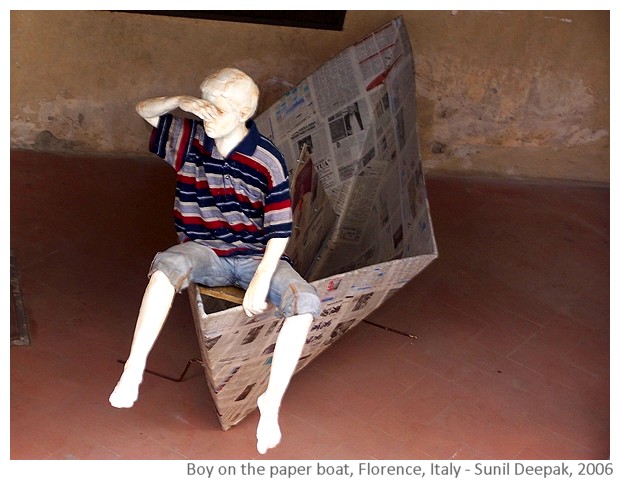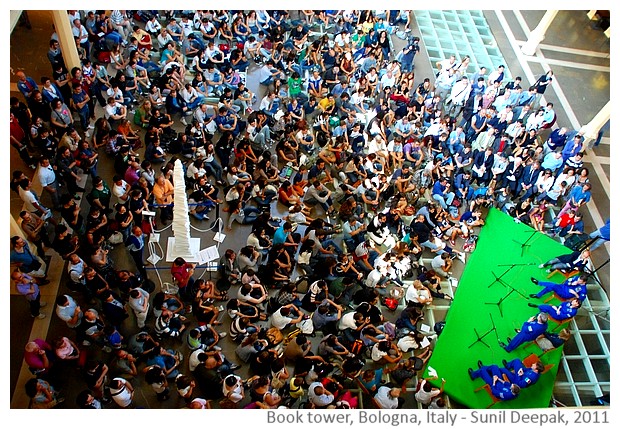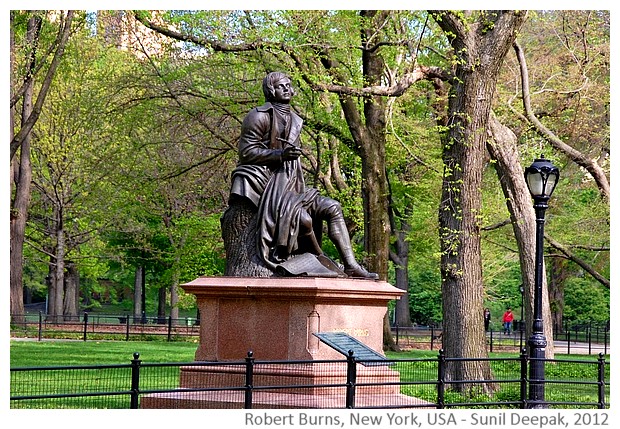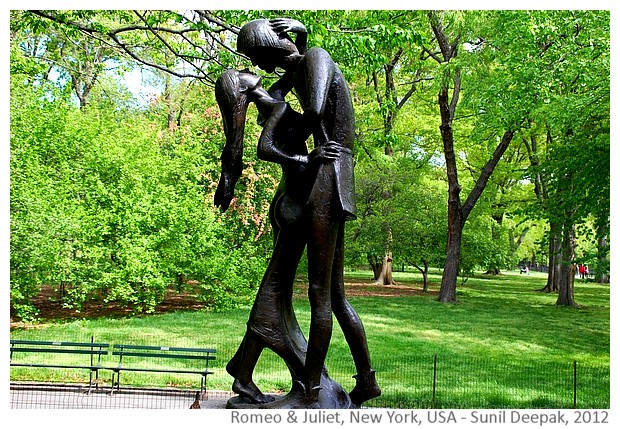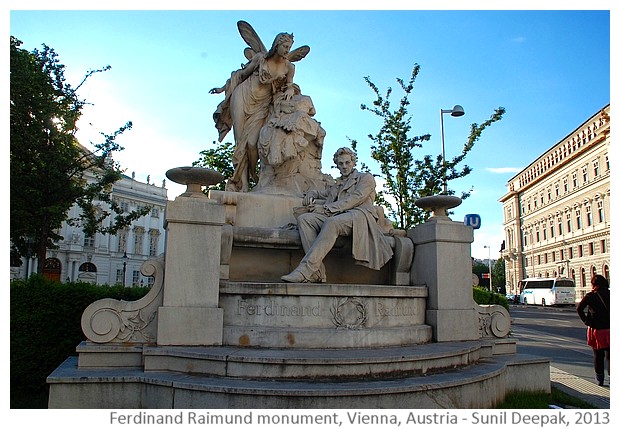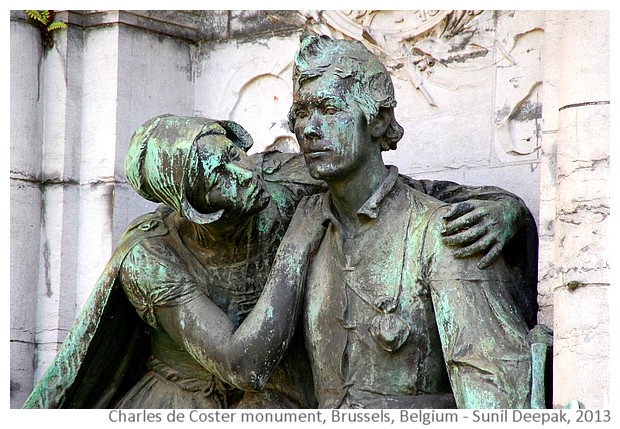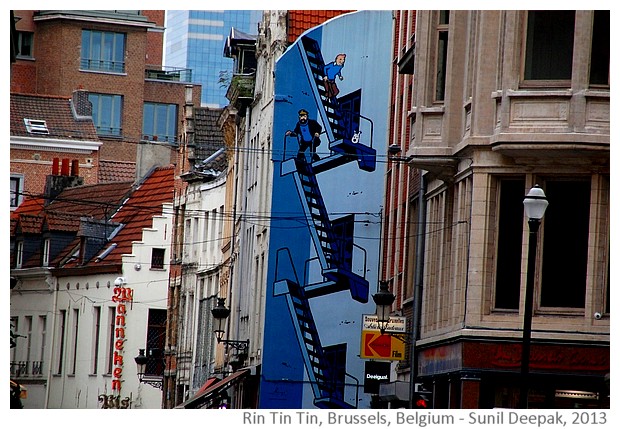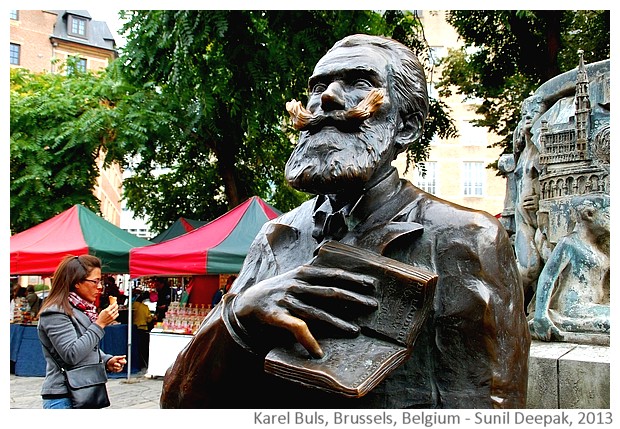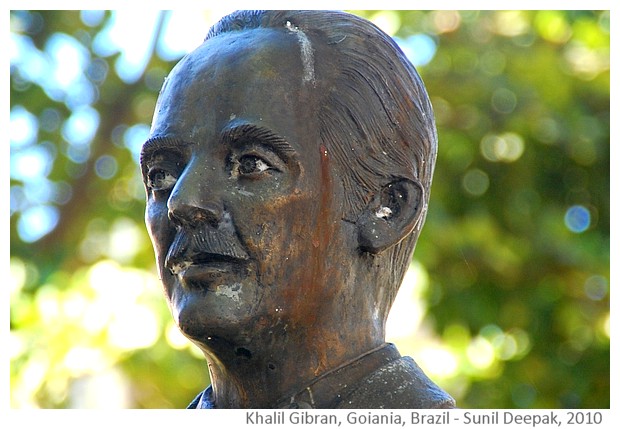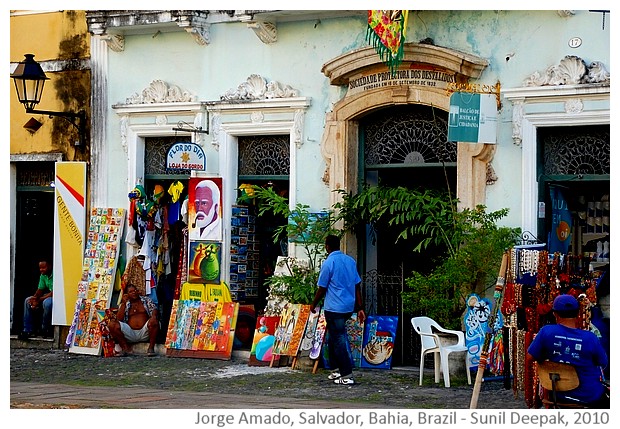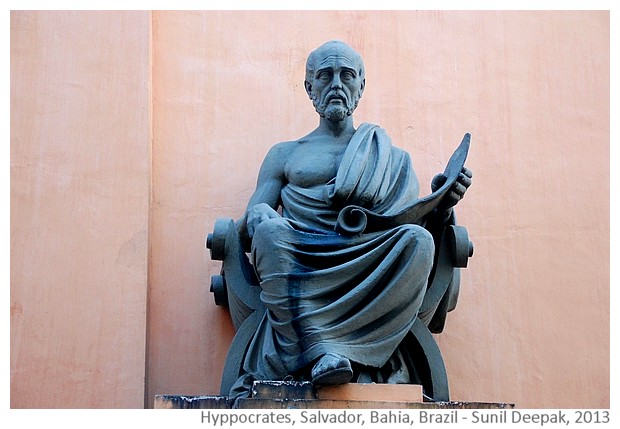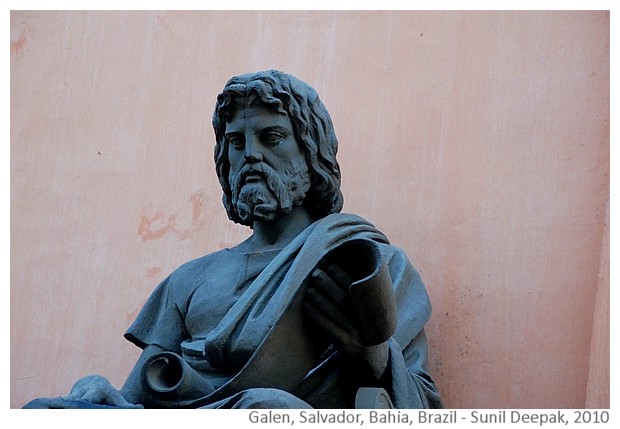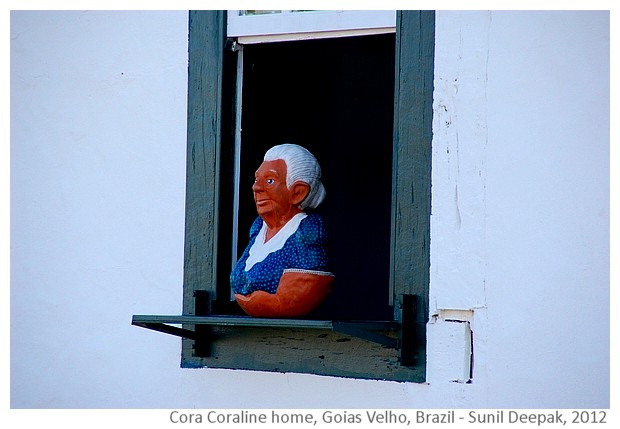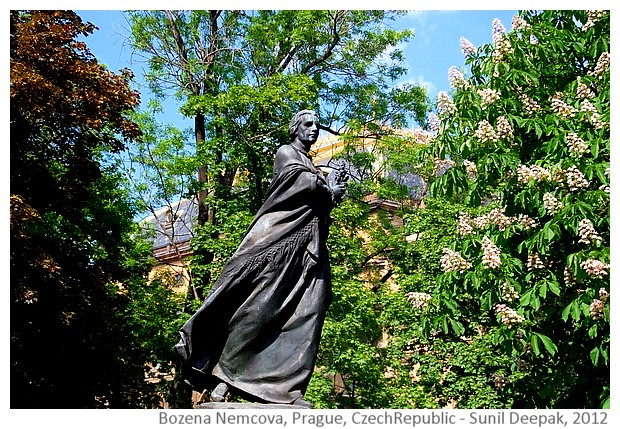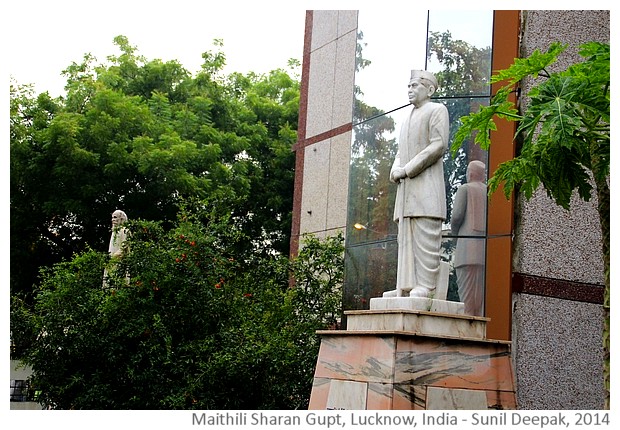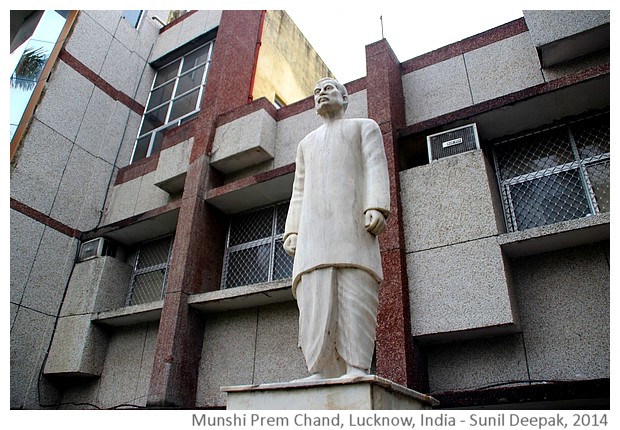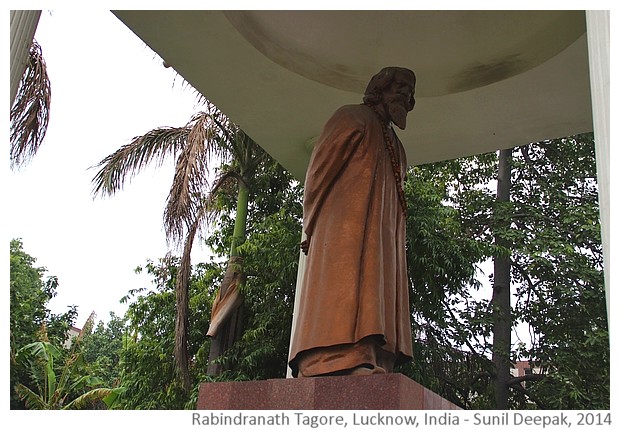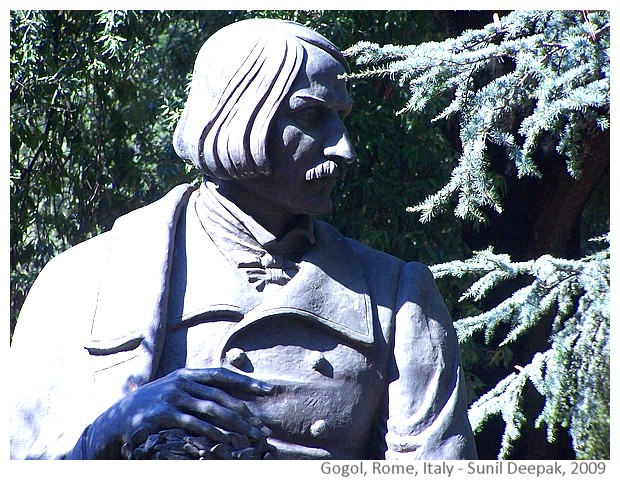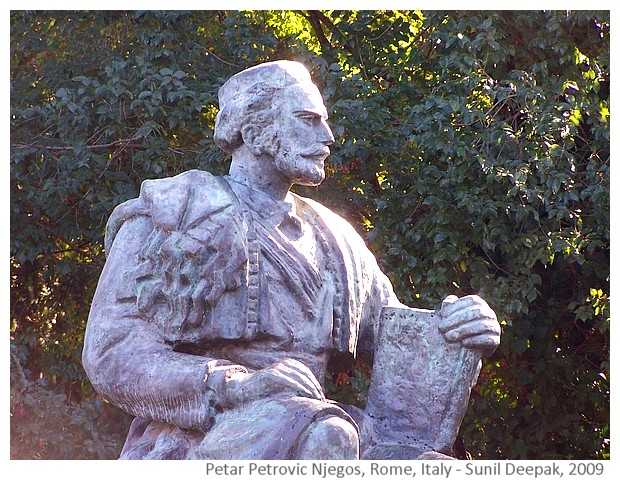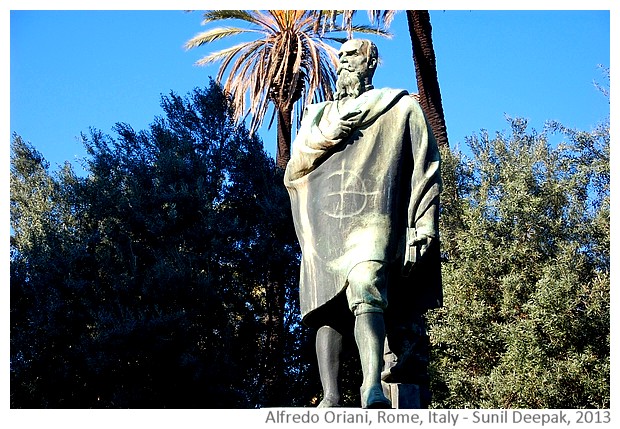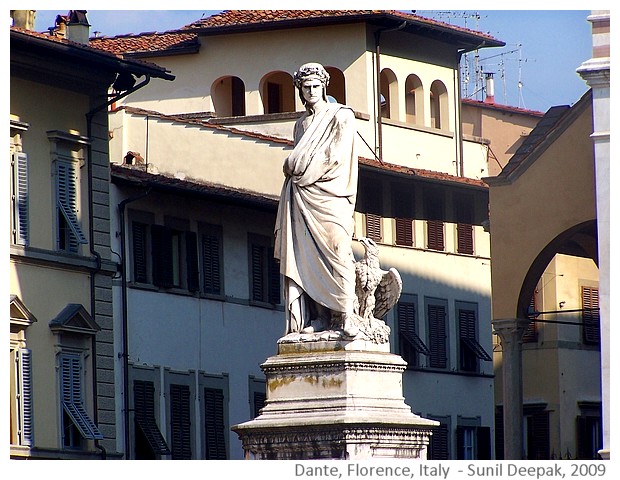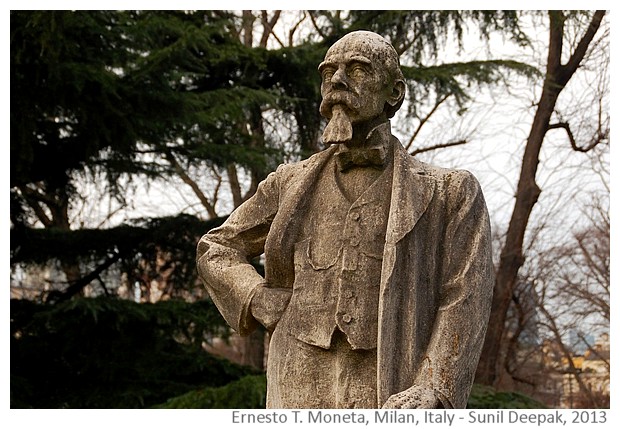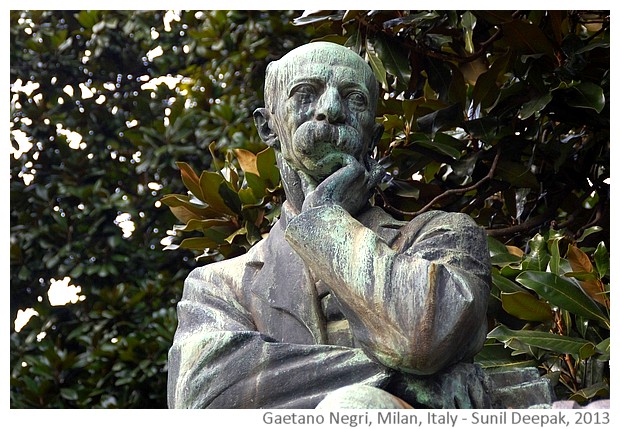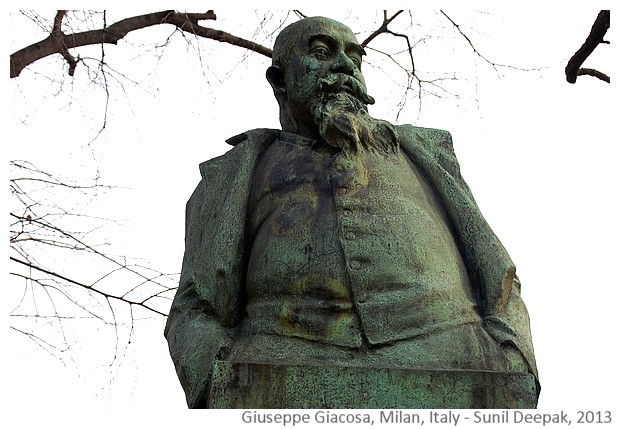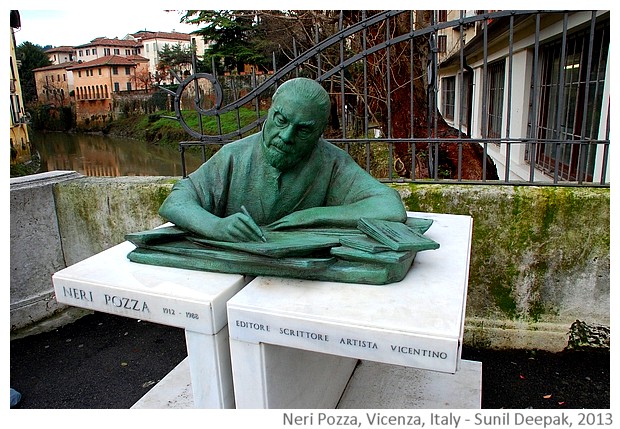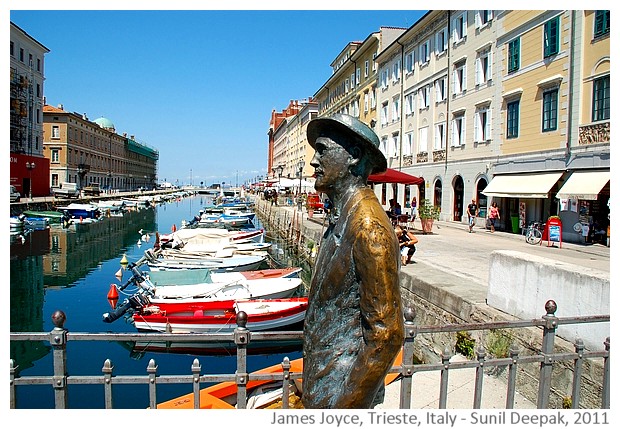Our tiny town of Schio in the north-east of Italy has an active art & culture scene. One of the annual events is the Mutations (Mutazioni) exhibition, held usually around the end of the year, held recently from 30 Nov. to 29 Dec. 2024 at Spazio Shed in the city centre.
I want to present 12 artists whose works I liked. I start with 4 sculptures and installations, and follow them by 8 paintings. Click on the pictures for a bigger view.
1. Sculpture by Paolo Ceola: It had a white jacket standing up in the air and asking "Where is the man?" Made of ceramic and oxide combination, it had a shining smooth finish.
With this sculpture, Paolo expresses his fear that we humans are losing our identity.
He defines himself as a experimenter and researcher, looking for innovation, and working with different art-languages including photography, painting, sculpture, videos and films. You can check Paolo Ceola's other works on his Instagram page.
2. The Playful Installations of Roberto Marconato: There were two installations by Roberto in the exhibition. Both had the bust of a young woman, both with headphones listening to music, one in a pink t-shirt placed over a tower of balls and books, and the other with a pink knitted cap, connected to her computer-monitor by a cord.
The installations seem to be talking about a future world, which is partially already there in our lives, where our work and free-time lives, both revolve around technology and even our human relations are mediated by it.
Roberto is a self-taught artist and he defines his art as "surrealistic", with a preference of using recycled materials in his works. You check his other works at his Instagram page.
3. The Colourful & Playful Animal Sculptures of Giorgio Nalon: Giorgio's animals seem straight out of mythologies and fairy-tales with bright colours. There was a cut head of a zebra resting over a Rubik's cube, vaguely similar to the bronze horse-head sculpture by Nic Fiddian-Green at Mable Arch in London, also reminds me of Mario Puzo's Godfather where the horse-breeder wakes up with the bloody head of his favourite horse in his bed.
Then there was a colourful chameleon, again clutching a Rubik's cube in his front legs. Finally there was a blue frog with a crown on his head, the frog-prince, waiting for someone to kiss him. You can check his Facebook page to see his works of art.
4. The Ceramic Dress by Daria Tasca & Vania Sartori: I was intrigued by this installation  created jointly by 2 women artists - a fashion designer and a ceramic-maker.
created jointly by 2 women artists - a fashion designer and a ceramic-maker.
It had a cream-coloured dress in silk-twill with a front-armour similar to a bullet-vest made of ceramic, out of which shining golden plates come out to surround the neck, while the hands-gloves have blue Sardinian wool gathering in 2 ceramic cups near the feet.
Daria started as a fashion designer and has been experimenting with painting on clothe, mixed techniques with photography and painting, and frescoes on wood.
While, Vania studied to be an architect and then started to work in her family's ceramic workshop. To see their other works, you can check the facebook page of Daria and Vania.
After the sculptures and installations, lets now move to the works of painters.
5. The Pentatych by Luciano Gasparin: Luciano had put together five canvasses to create a combined rectangle, dominated by shades of reds.
His work was titled La Vita, the life, and had a quote by Seneca, saying, "No one would give you back years, no one would give you back to you; the time of your life will pass on the path you have undertaken and would never come back or to stop passing ..."
The painting combined a few figures - a head, a photograph and a church, while the remaining spaces were filled by abstract colours. It touched me deeply and I spent a long time standing there to look at it. You check his Instagram page to look at his other works.
6. The Immense Blue Ocean of Salvatore D'Oria: Salvatore is originally from Reggio Calabria in south Italy. His initial work was with oil paintings. In the recent years, he has starting doing more work with acrylic colours, which he uses to express motion and movement.
His painting in this exhibition was titled L'Immenso, the Immensity. The blue and whites of this work expressed communications and how the modernity with rushing time takes away our individuality and identity.
7. Suspended Horizons by Paolo Pallara: Paolo had 2 canvasses in the exhibition, both titled "Suspended Horizons", one of which is presented here.
He uses acrylics, tar, oil-pastels and ash to create the dirty yellow backgrounds with a tiny black sun and dark splotches of the horizon, from which black threads reach downwards. He describes these as, "In these suspended horizons, the becoming of days becomes the space where you find refuge ..."
The two paintings make me think of our polluted towns, as the evening falls and the skies turn yellow, both ugly and beautiful, at the same time.
You can check Paolo's Instagram page to look at his other works.
8. Urban Landscape of Claudio dal Pra: Claudio's landscape was located in Chiuppano, a tiny mountain town, not very far from Schio. It was an urban landscape, located clearly at the fringes of the rural-natural and is made ethereal by shades of yellow, old medieval buildings, and a complete contrast to Paolo Pallara's canvas-world above.
In fact, Claudio's colours were lighter and brighter, his buildings seemed wrapped in the mountain mist, almost a dreamland.
You can check Claudio's Facebook page for his other works.
These two artists, Paolo Pallara & Claudio dal Pra, made me think about the aesthetic pleasures of the two completely contrasting styles, and how we can appreciate beauty in so many diverse forms.
9. The Masked Animal by Sergio Polli: Sergio had a gothic looking canvas in the exhibition, with dark colours and a portrait of someone with a hybrid animal face - the face looks like that of a horse, but it also has two big horns - perhaps it is a male deer?
Animal masks have been used by the shamans of ancient people, they represent the capacity to visit the spirit worlds and to talk to the spirits. At first glance, Sergio's work looks like that. However, he has titled it the "masked animal", thus, it is an animal with a mask, probably referring to the animal instincts of certain persons who wear masks to seem civilised?
Sergio had recycled the wood from that used for making boxes, to make his canvas for this painting. His Instagram page defines his work as "recycling for painting, painting for recycling" and likes to use his art to express things for which there are no words.
You also check Sergio's Facebook page to see his other works.
10. AI Art of Annabella Dugo: Annabella had the prints of two very striking works, one titled "Meditation" and the other, "Sin of lust". These have been made with the help of AI.
At one level, it was impossible, not to be fascinated by the two works, for their surrealistic hyperrealism and their choice of subjects & colours. At another, it raised the question about manual artistic skills.
I think that in the past, artists needed to have both, imagination and manual skills to create art. But with AI, it combines imagination with software skills, while the manual skills become unimportant. How is that going to influence our ideas about art? Annabella is a renowned and award-winning artist from Naples, so she has manual artistic skills, yet here she chose to use AI to create these works. How does that affect our views about her art?
You can check Annabella's Instagram page to look at her other works.
11. Painted Glass Works of Loria Orsato: Loria, based in Vicenza, uses glass in her works. In the two works presented in Mutations 2024, she had hand-painted glass on canvas to represent the "Family of long-necked queens".
North-east of Italy, including the famous Murano island in Venice, are known for their glass related works and workshops. Perhaps Loria is a part of this tradition. She defines herself as an art designer and colour-researcher, and she hand-paints on glass.
At the same time, over the past decade, she has been active in dance-therapy, the Dancing Hands, inspired by the works of Argentine dancer Maria Fux. I had heard of Maria Fux from my friend Pio Campo and once gone with him to see him use dance-therapy for persons with mental health problems in Goias, Brazil. I feel that this combination of artist and dance-therapy, makes for an interesting person.
You can check Loria's Facebook page and her Instagram page to see more examplesof her works.
12. The Contrasts in Paintings of Daniela Toniolo: The 12th and last artists for this post is Daniela with 2 acrylic on canvas paintings titled "Rebirth" and "Opposites".
Against a background of grey and purple, the two artworks had geometric spaces, like floating windows and glasses, which seemed to be reflecting into each other, making me feel as if I was getting lost inside a mirror room, which reminded me of the final scenes of Bruce Lee's film "Enter the Dragon".
Daniela is from Schio. About her works, she says, "It can be defined as fluid-ordered, with inexistent brush-strokes, highlighting the diluted and transparent colours, with counterpoints of bright white ..." You can check her work on Instagram.
Conclusions
I felt that this year, Mutations exhibition had fewer sculptures and installations, and fewer works with a strong visual-aesthetic impact.
Let me conclude this post with a close-up image of cubes titled "Eva's Garden" by my friend Eva Trentin from the Mutations exhibition. Eva makes beautiful works by bringing together nature and its organic imprints on different surfaces. Her works are like labyrinths, the more minutely you look at them, the more facets you can discover. You can check more of her works on her Instagram page.
*****




























